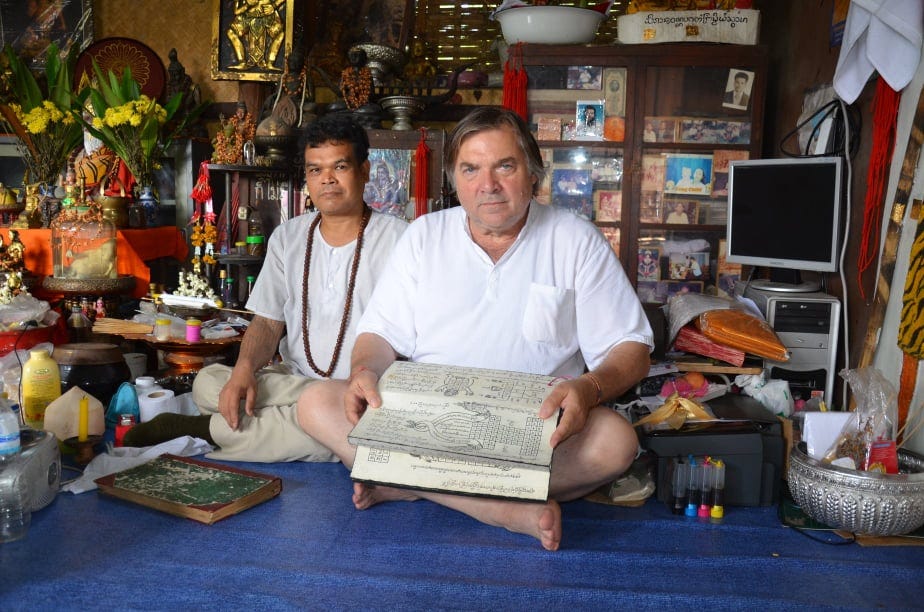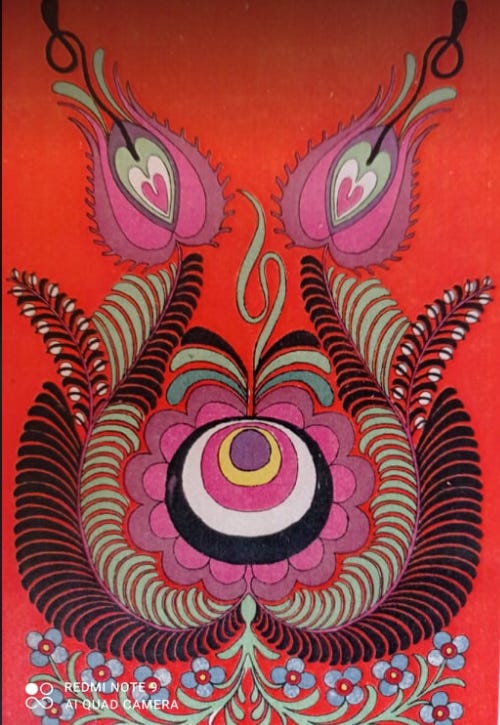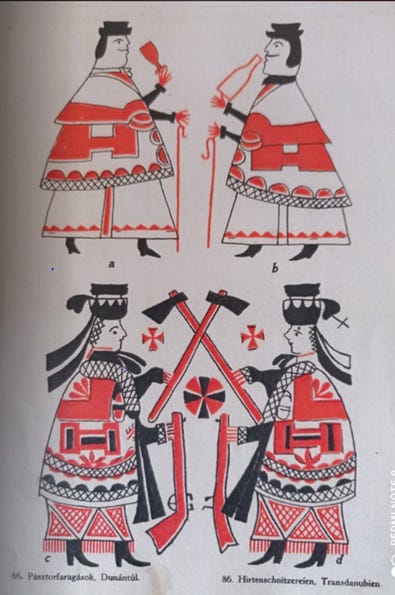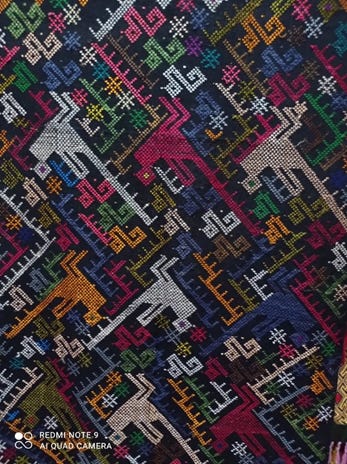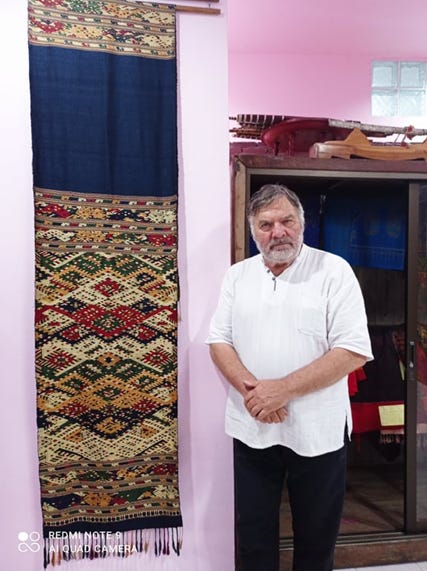The emergence of a new patrimonial art
Art goes through violent changes when cultures shift, leading to new trends and paradigms
My co-author holding a profusely illustrated handmade manuscript by Pasong Ruesi
This article was a joint collaboration with Kovach Imre Barnabas in 2016
Metaphorically, new art trends are like volcanoes. They erupt along the tectonic fault lines of colliding and shifting cultures. No one can predict when an eruption will occur. Nor can the length and magnitude be known until after the event.
Art goes through violent changes when cultures shift, leading to new trends and paradigms, due to the tectonic nature of cultural vista.
Today's art world is a very well mapped-out universe consisting of a few thousand leading galleries, museums, a few hundred influential curators and art fair organizers, writers and critics, wealthy collectors and institutions, and of course, the artists themselves.
The artwork is a USD 64 billion a year industry. It mirrors socio-economic trends and itself has become globalized, with different regions within.
Contemporary art is considered a financial asset class, where the promotion, investment, and protection of this asset has taken on priority within the art industry.
Art has become financialized. Financial institutions and fund managers have joined art collectors in creating their respective portfolios of art. Today's definition of good art is that it is saleable and the definition of a good artist is that he or she is marketable.
The prices of contemporary art have grown to spectacular heights, where the million dollar range for art pieces is very common, and some artists sell their works for tens of millions dollars.
However, if somebody buys a painting for millions of dollars, what they are actually buying is a stretched canvas and paint. The actual material value of a painting is a tiny fraction of the purchase price. The price of the art work is based on and justified by opinions within the art community which give a certain value and importance to the artist as a brand. The artist becomes a brand with a price tag.
Within the art world, stability is an important factor because nobody wants a cultural shift which can suddenly devalue art assets. However, such devaluations happen from time to time and affect whole periods of historical art.
A Hungarian piece
A new tectonic shift is coming
The familiar images of today’s modernist art works which are art for art, art about art, and art from art creations will soon be seen in a new perspective. A tectonic shift in culture and globalization will stir up art movements based upon traditions, scared philosophies and teachings, with its symbols and colours embedded within cultural themes. Patrimonial art which is embedded within cultural themes of traditional lifestyles and beliefs will collide with contemporary art, the art of global capitalism.
By patrimonial art, we mean contemporary art with the intent and knowledge of transmitting sacred tradition.
However, the two art paradigms are not compatible.
Sacred tribal patrimonial art most often consists of thousands of year old symbols and teachings which provide advice and guidelines for all aspects of life.
A Hungarian piece
Patrimonial art is not art for art. It has a much higher goal of seeking to maintain the heritage of harmony and balance of traditional rite, rituals, and spirituality. Patrimonial art is embedded within nature itself. Patrimonial art has a teaching and healing function and establishes the values of humanistic community.
In contrast, contemporary modernist art is a financial asset class. Its goal is to establish a saleable brand, being the artist’s name, which creates a high valuation based upon a consensus between the players of the art world.
There is also a mythology about contemporary art. The assumption that contemporary art is one of the highest social achievements of people within society. Thereby placing the discipline on a cultural plane that is viewed as something pure and uncorrupted.
Contemporary art is consequently seen as being one of the most valued artefacts of society, being collected in art galleries, museums, and in private collections around the world, unquestionably considered to be at the pinnacle of human prowess.
In such an environment of closely connected curators, critics, gallery owners, artists, and fund managers, value is created and maintained in the interests of small select groups.
In contrast, patrimonial art doesn’t yet have a plane of entry into the art establishment. The deep meanings contained within and the sacredness of patrimonial art may not help in creating financial value. However a patrimonial art work may have deep cultural value within the community, religion or spiritual schools it originates from. Ultimately, this may translate into monetary value as well.
An eruption is coming from within the ranks too. Many contemporary artists are not completely signed up to the modernist paradigm. Many have interest in art outside the bounds of modernism. They often admire sacred patrimonial art influenced by it and resort to embedding the ideas of patrimonial art into their own works.
One example here is Picasso and his fancy of African tribal art.
There are also indicatory trends in the culinary arts and gastronomy which have parallels to the art world. Australia is going through a small renaissance of traditional bush foods and fusion gastronomy, bringing together food influences from different culinary cultures, is now the order of the day within restaurants and food malls all over the world. Traditional herbal remedies are now more popular than ever.
There are many modernist artists now working within Indian, Asian, African, and South American indigenous communities , where local artists are influencing them with intellectual and style inputs within modern art pieces.
A special case which should be followed is Australia. Community artists have transformed sacred ancient patrimonial designs into modern art where gallery valuations went through the roof in recent years.
There were many ‘natural nations’ in existence before colonialism and its child globalism. Many of the natural nations are still here upholding their culture and art traditions which influenced contemporary art. Working within these two paradigms requires contemporary artists to start looking within once again.
Handwoven cotton carpet from Laos – None of the pieces of art figured here are considered high art, but they embody a much older and refined spiritual artistic tradition than modern and contemporary high art priced at millions of dollars a piece by leading art galleries and auction houses. The appreciation of patrimonial art is due to lack of intellectual and spiritual understanding from the part of the Western art establishment.
This is beginning to affect the appearance of modernism.
A new patrimonial art is emerging with global outreach nurtured by sacredness and cultures of ‘natural nations’, like the indigenous communities in the Americas, Africa, Asia, and Australia. This trend will meet modernism and collide with it.
When these two tectonic plates collide, a process happening now, sacred patrimonial art will break the plate of modernism. Along the break lines a number of eruptions will occur in the form of new patrimonial art centres emerging across the globe.
This will cause a paradigm shift in the art world similar to the one which happened when modernism started.
The result will be a new patrimonial art paradigm that will incorporate the values and sacredness of many cultures that have been unable to express themselves in the globalized community of today. Art in the not too distant future will reflect some of the old traditions of the past and present.
The age of modernism is barely more than 100 years and thus has a minuscule timeframe when compared to patrimonial art. Patrimonial art has been in existence for thousands of years.
When we see modernism reflecting age old patrimonial art, we will come to our senses. We will stop believing that art is for art, art is about art, and art is from art. This will challenge the concept of art as a financial asset, that the best pieces of art are the ones that sell for the most.
Every artist knows deep down that his or her talent and dedication is not for developing financial assets.
The greatest art ever produced by humankind was never produced for sale or profit. Art was not pegged down by its potential of creating value, except for the intrinsic values of perfection, culture and spirituality.
The tectonic shift in the art world and the emergence of new patrimonial art styles across the globe carries with it the potential to make art free once again by unshackling creativity.
Ultimately the reason for making art and owning art will be rethought. The concept of branding and price tags developed by the organized artists of the modern era who have reverted into factory production of their pieces for profit will be challenged.
The new patrimonial art will provide a venue for valuable traditions, spiritual and aesthetic that are quickly disappearing off the face of the earth today due to globalization. By serving the community providing it with its symbols, identity and self-esteem, by making a people’s tradition alive and active again new patrimonial will have a much wider acceptance and more functions than modernist art could ever have.
First published in Modern Diplomacy 6th May 2016
Kovach Imre Barnabas – Mystic, tradition holder, spiritual teacher, and calligrapher
You can subscribe for free emails of future articles here:




